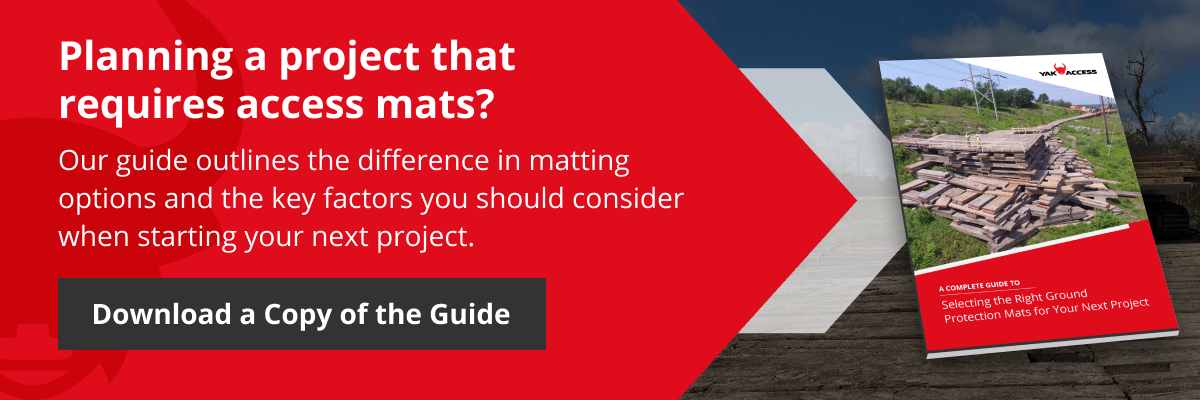We talk a lot about safety at YAK ACCESS because it’s such an important topic. All types of heavy equipment require training and careful attention to safety protocols. However, when cranes are used on-site, the stakes get even higher. As a leading provider of access solutions for all types of projects and terrains, we know what it takes to reduce the risk of crane tip-overs.
Potential Implications of Crane Tip-Overs
In addition to being heavy equipment with the same challenges and risks as other machinery in this category—limited visibility, collision with people or other equipment, and so on—cranes create other potential hazards. When objects fall or cranes tip over, the people on the ground are at risk of injury or death.
The core function of cranes is to lift objects into the air. Even with all the right precautions, gravity sometimes wins, and materials can fall to the ground, putting the people below at risk. Because cranes move heavy loads through three-dimensional spaces—often high in the sky—they are at risk of tipping over if not properly anchored and operated. Although the base has a relatively small footprint, the large boom can cause destruction if a crane tips. This is also true of boom lifts designed to lift people.
How to Avoid Crane Tip-Overs
In addition to complying with safety standards set by the Occupational Safety and Health Administration (OSHA) and other organizations, use these tips to reduce the risks of operating a crane at a project site.
Keep the base clear.
Crane clearances depend on a few factors, including the work you’re doing (power line, construction, and so on), the surrounding terrain, the extension range of outriggers, and more. Make sure you understand the required clearances and the rationale behind them when operating a crane.
Hire trained operators.
Crane operation is a specialized skill that requires sufficient training. Make sure any provider you hire has the necessary qualifications and maintains appropriate certifications.
Respect weight limits.
Cranes have load limits for various conditions, and those mustn’t be exceeded. Overloading a crane can lead to mechanical failure, tipping, and other possible hazards. The same is true for rigging slings and other equipment used to secure loads.
Pay attention to the weather.
High winds, slippery ground, lightning, and other adverse weather conditions are incompatible with cranes. Pay attention to the forecast and plan your work around it. It’s not worth risking the health and safety of the crew to avoid delaying a project.
Inspect the site.
Perform regular inspections to ensure the site remains safe for crane use. Materials get moved, cranes get relocated, and other changes are made that could impact the safe operation of a crane. Inspect the site before each use to check for hazards such as unstable surfaces, holes, debris, obstructions, underground infrastructure, overhead objects, and more.
Use crane mats.
Having a stable work platform is essential for safe crane operations. Working on a slope, on uneven ground, or with slippery conditions creates unnecessary hazards that can be avoided with crane mats, which provide a stable work surface that allows cranes to maneuver safely. They can also be paired with outrigger mats for even more stability.
Because equipment specifications and site conditions are unique to each project, it’s important to use customized solutions every time. The crane mats that worked on your last project might not be robust enough for the next one. Also, the heavy loads that crane mats bear often mean they can’t be reused. If you do consider used mats, inspect them thoroughly before use.
Enhance Site Safety with YAK ACCESS
When you choose YAK ACCESS, we work closely with your team to determine the most appropriate—and safest—site access solutions for your project. Our team has decades of experience creating customized matting approaches for utility and construction projects in all environments. Our expertise is in providing the right mats at the right time so that your team can focus on what they do best.
Crane mats are just one piece of the site access puzzle. Read our guide, A Complete Guide to Selecting the Right Ground Protection Mats for Your Next Project, to better understand the types of mats available and when you should use them.


